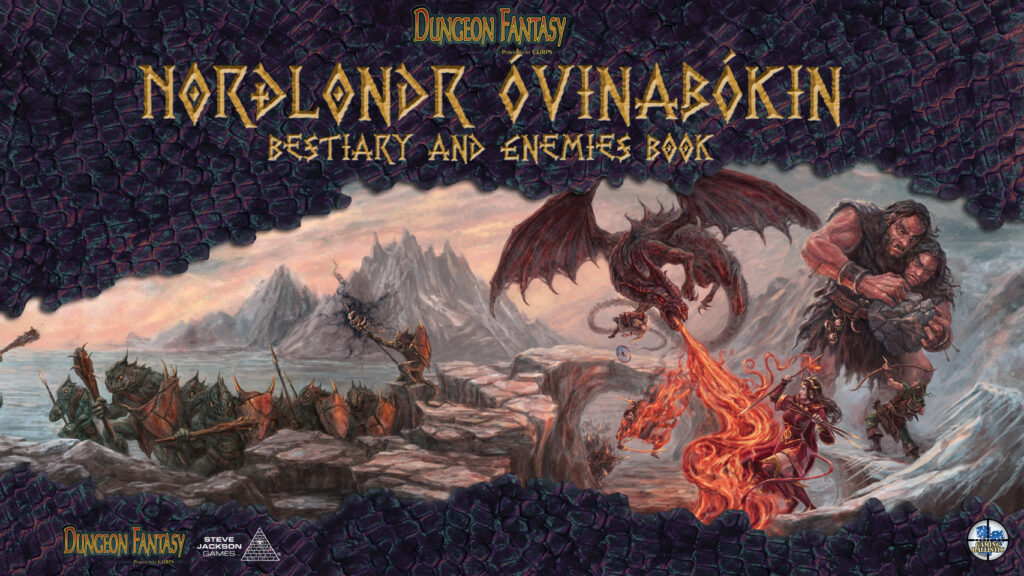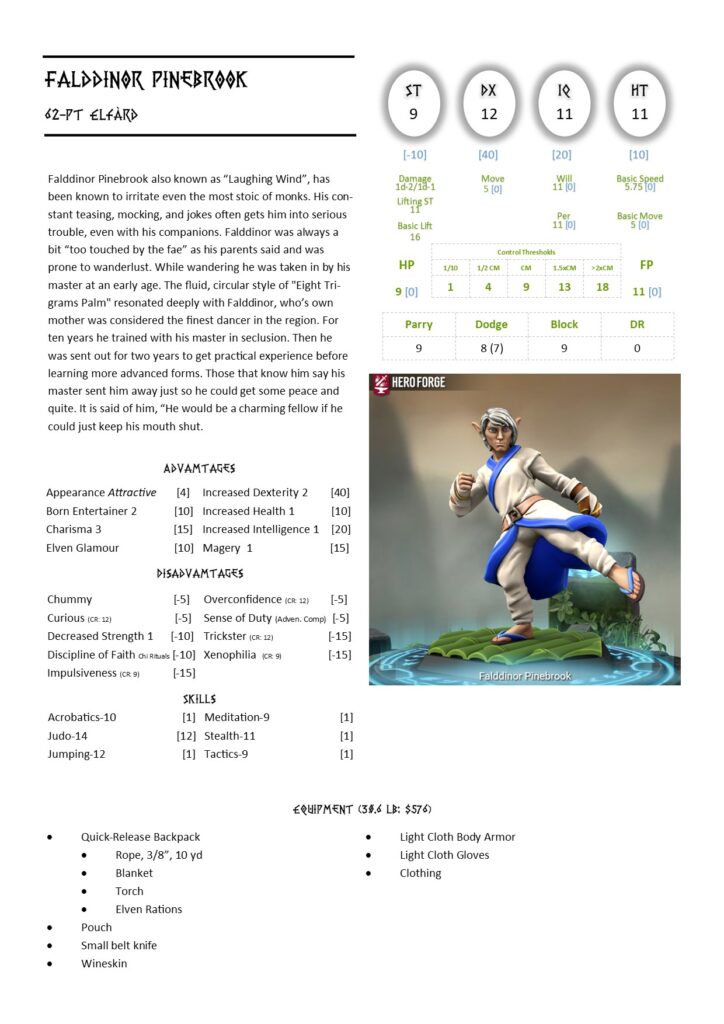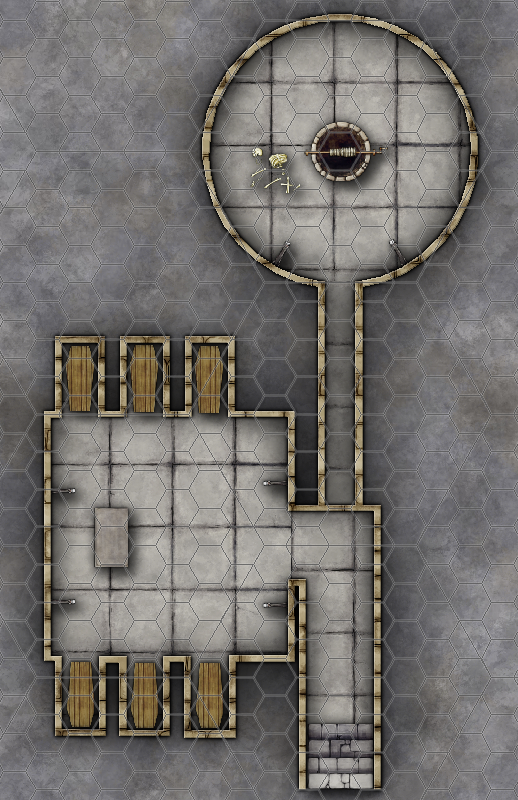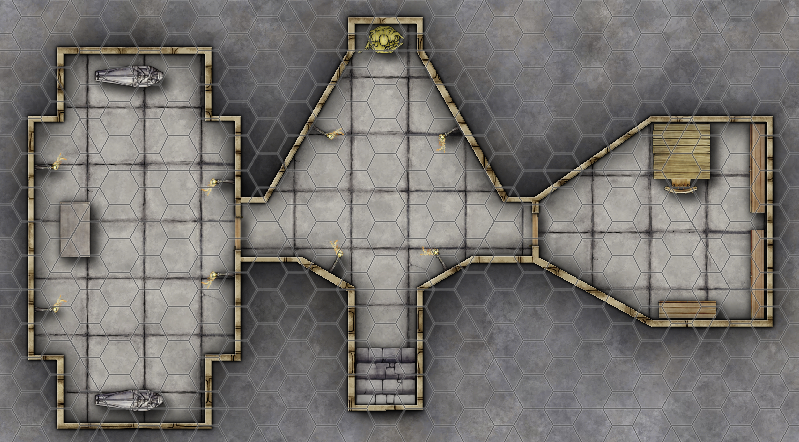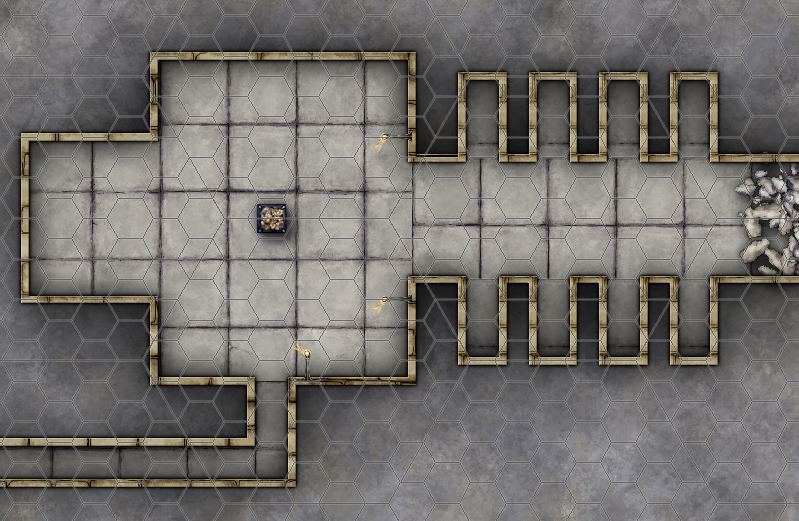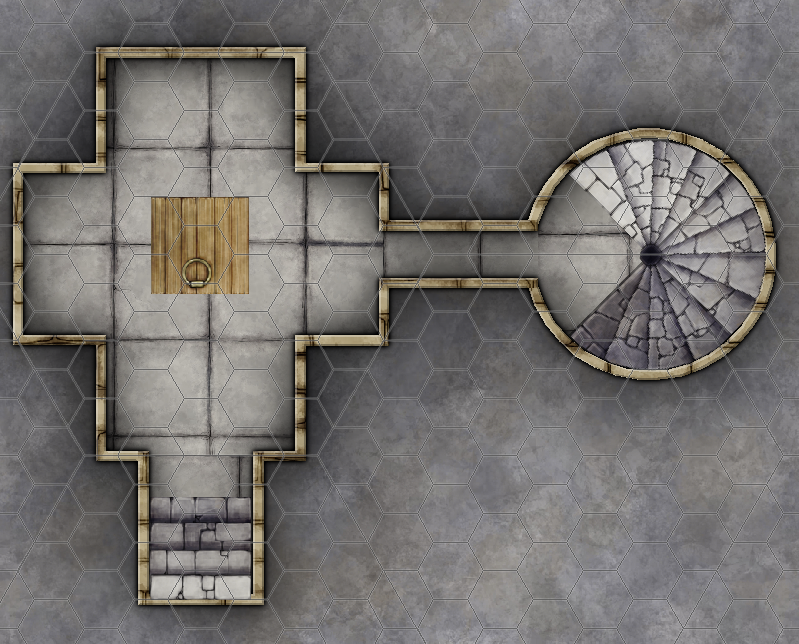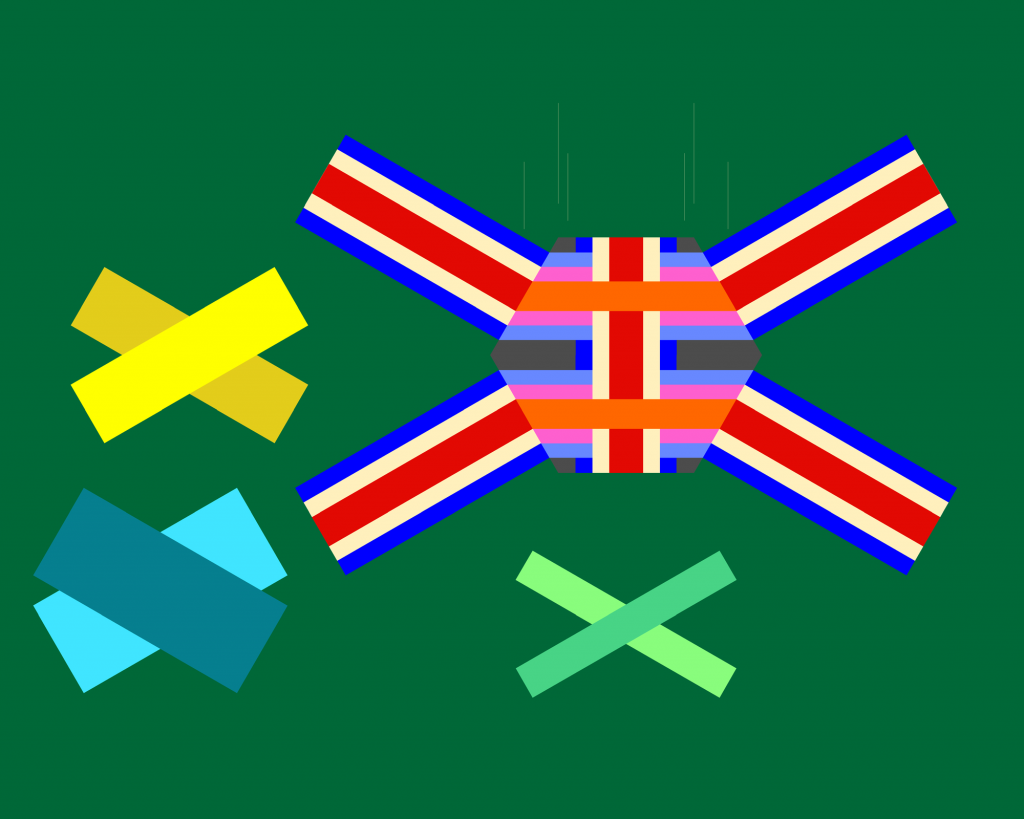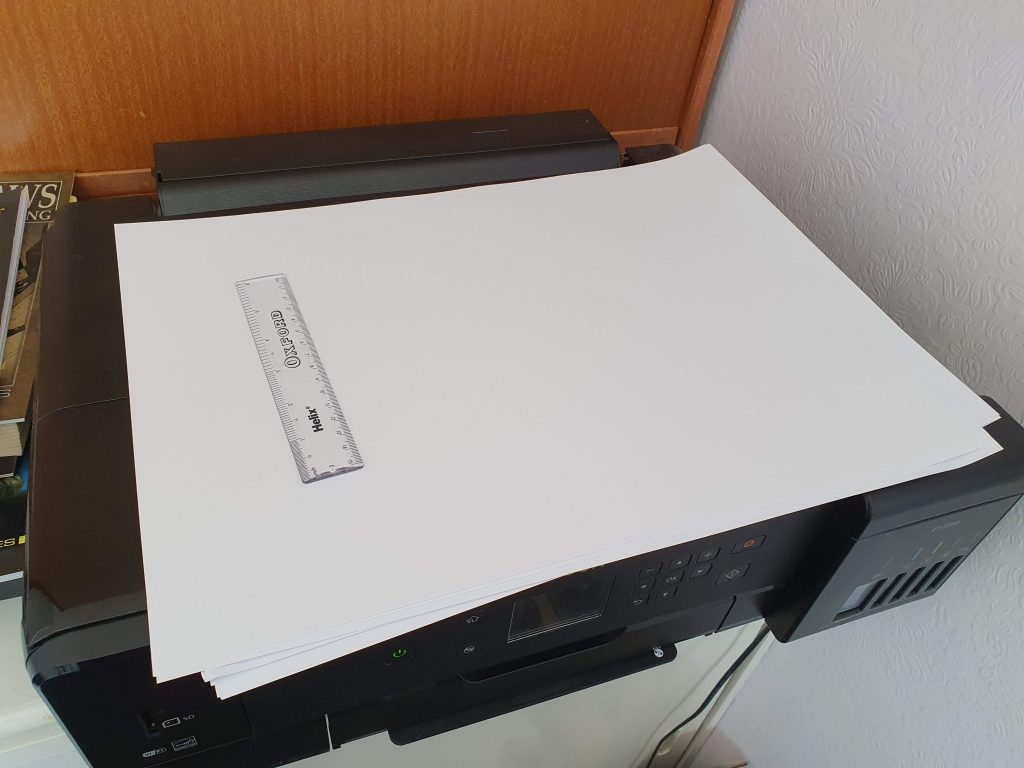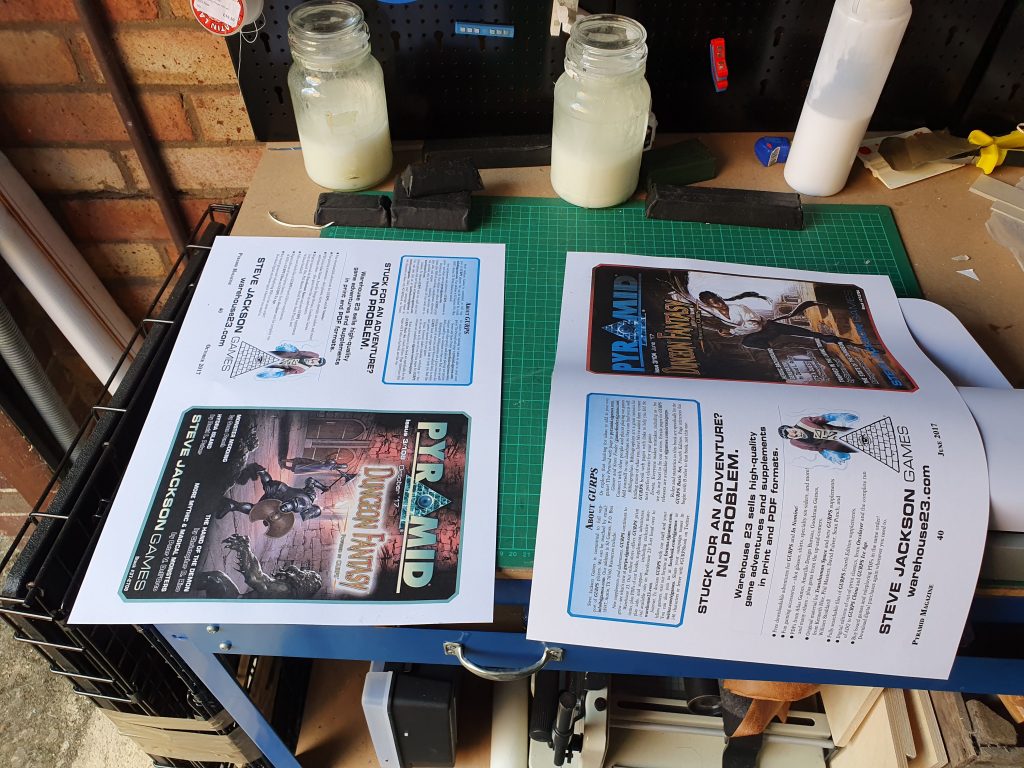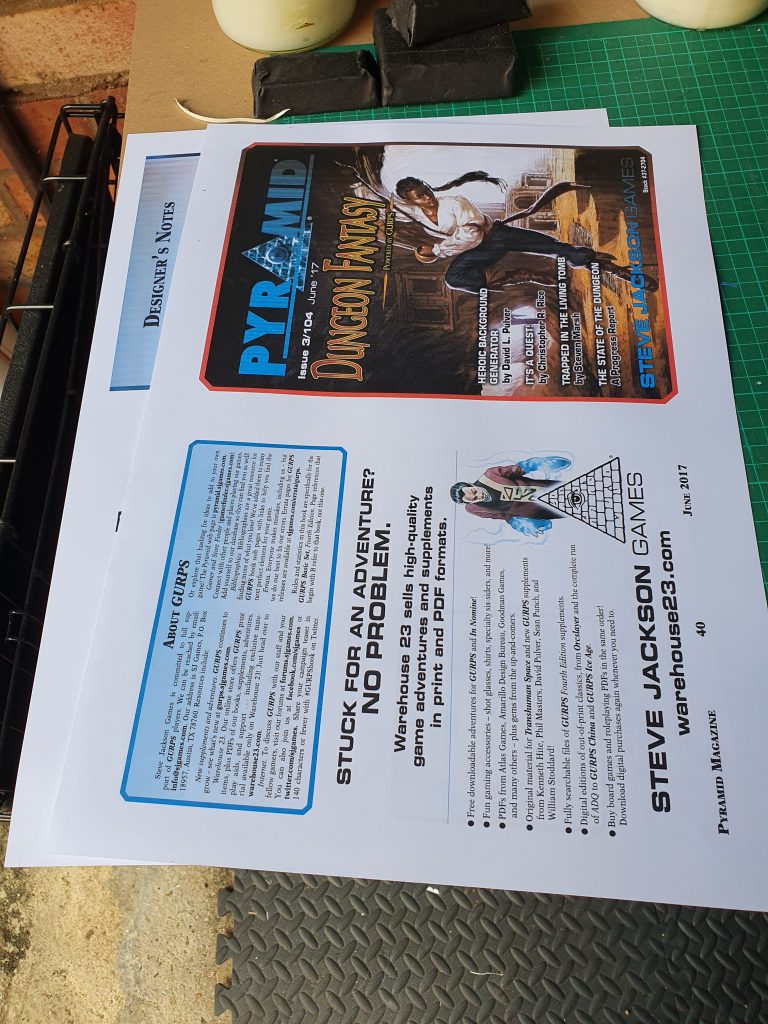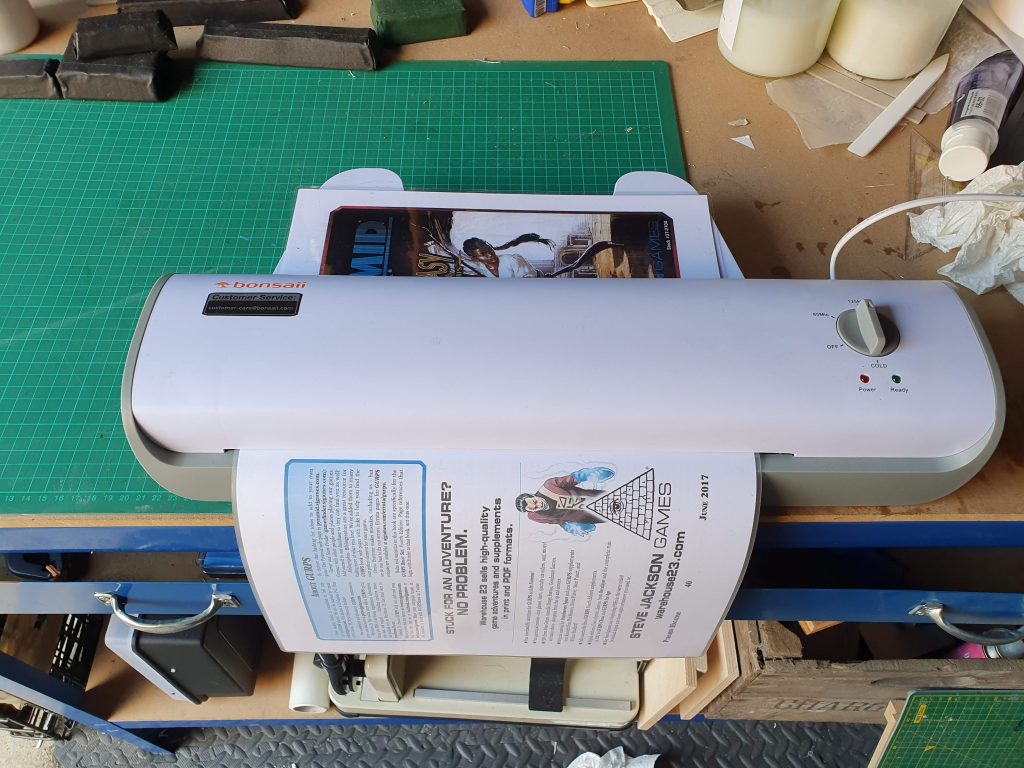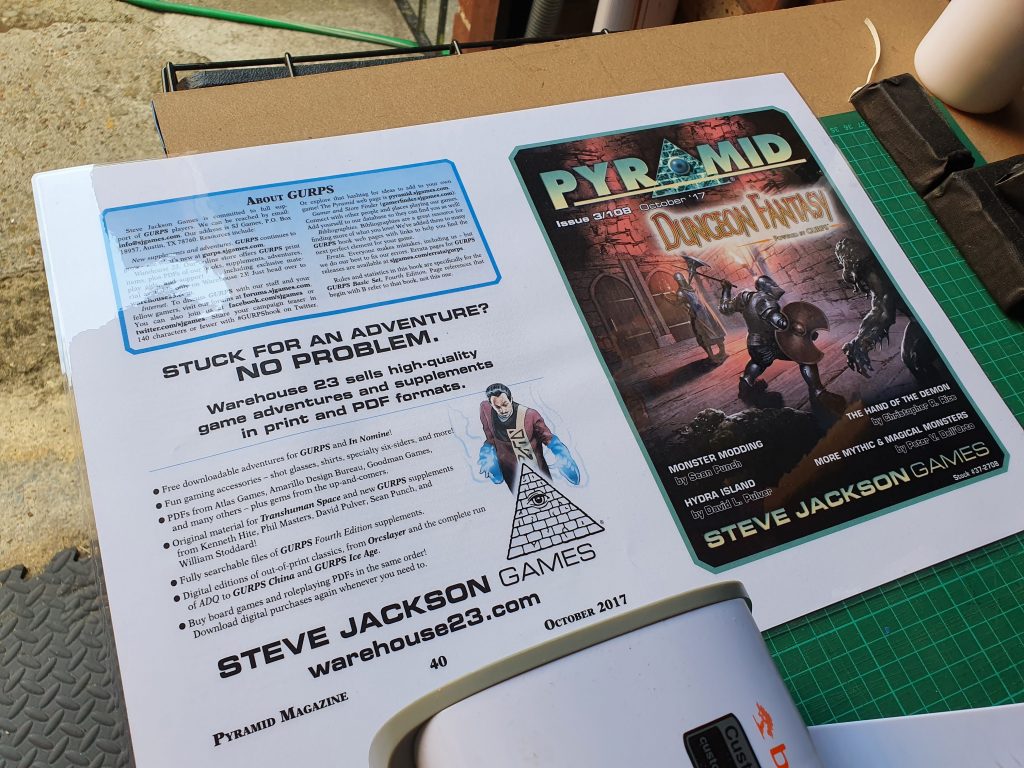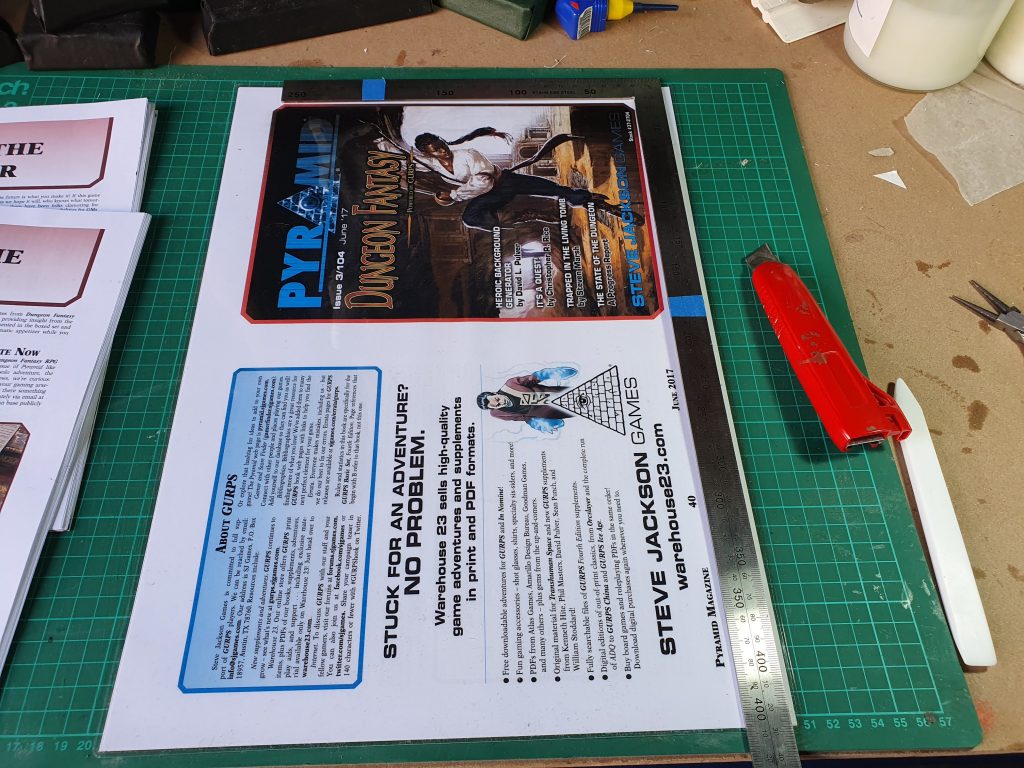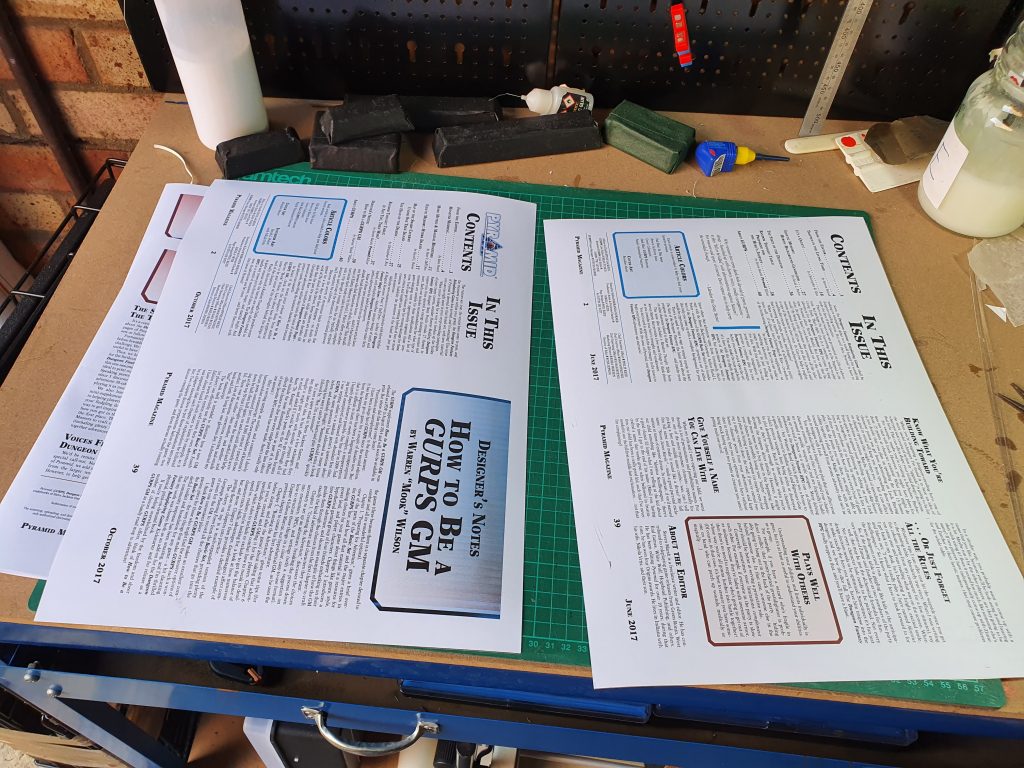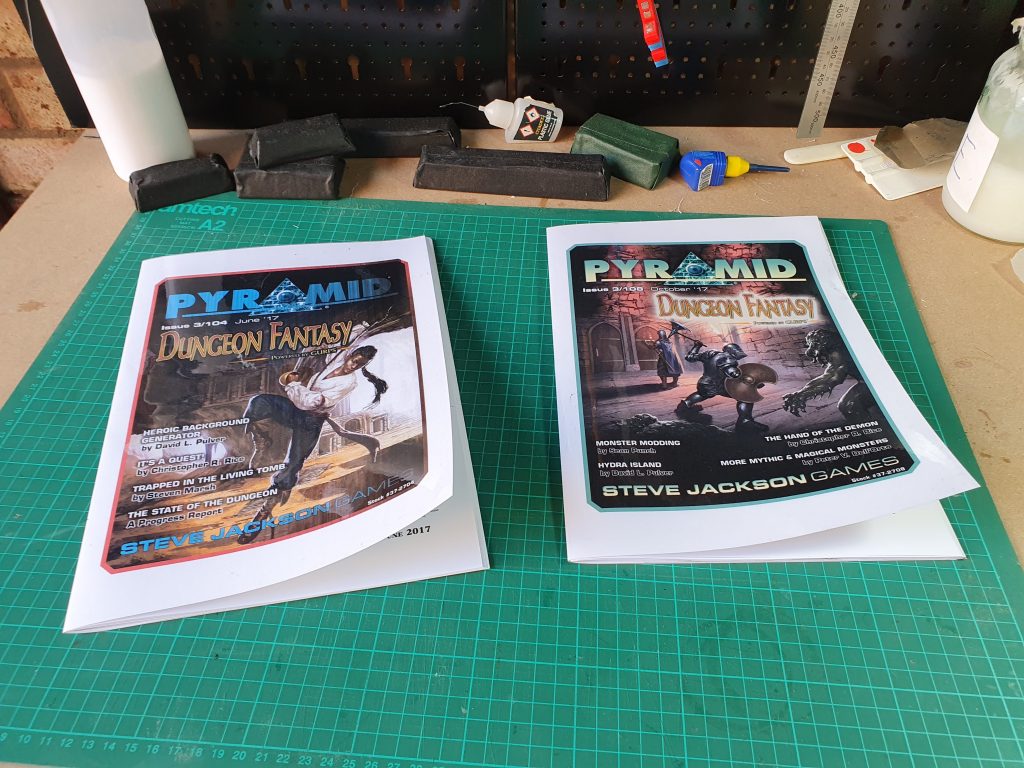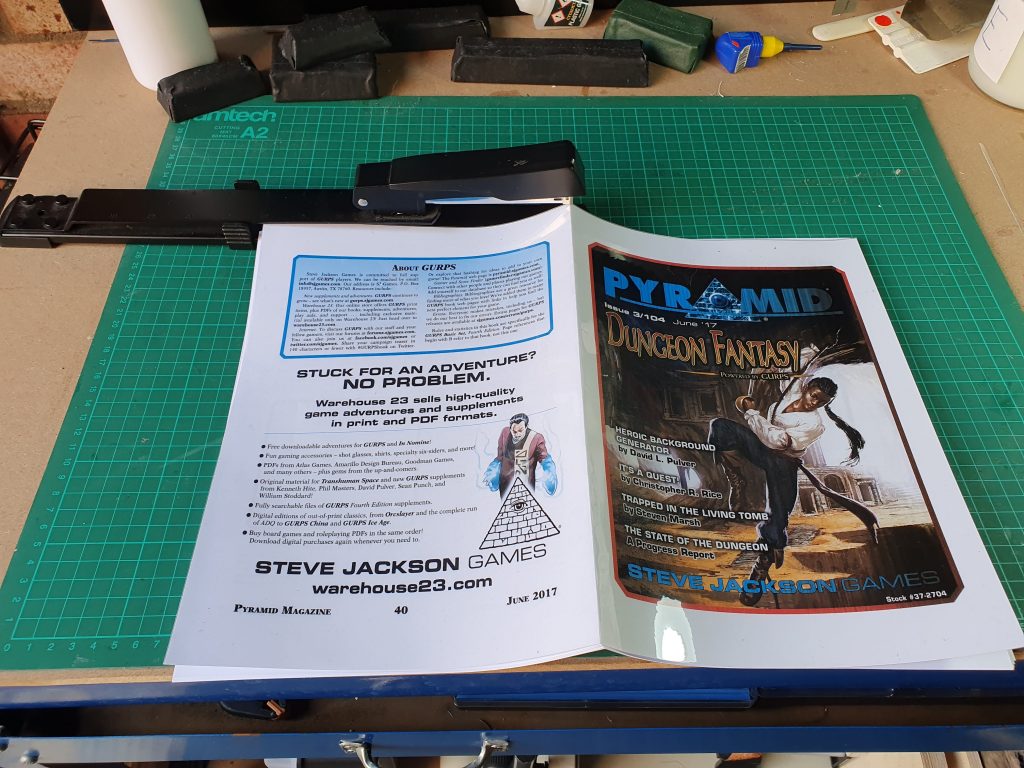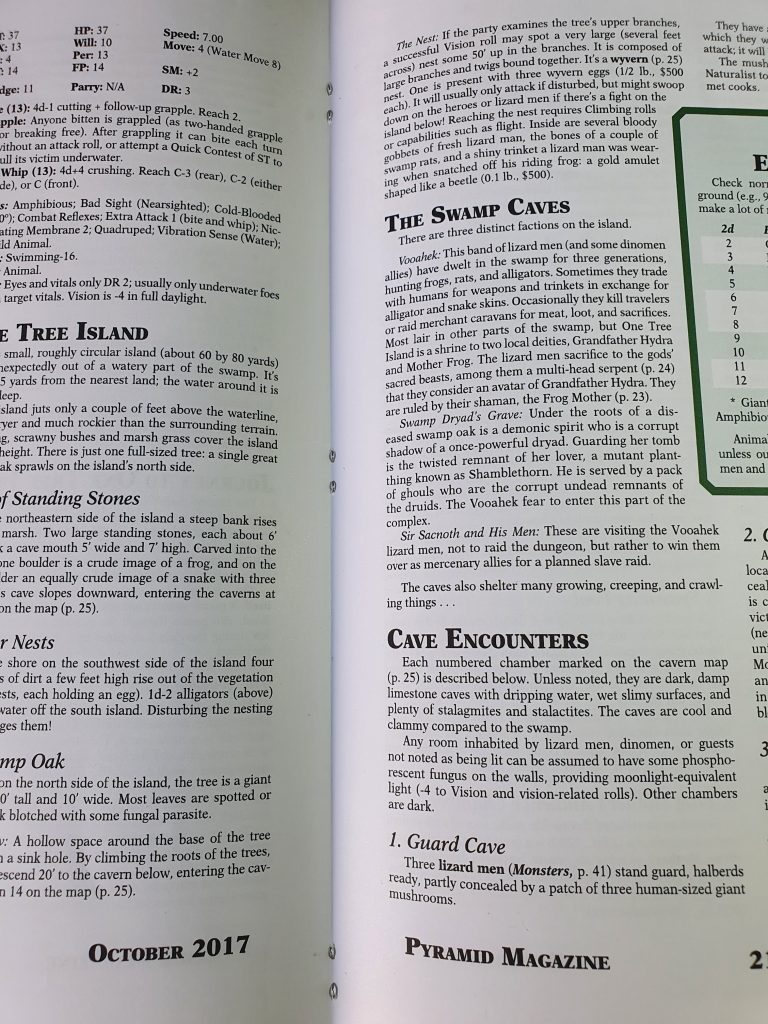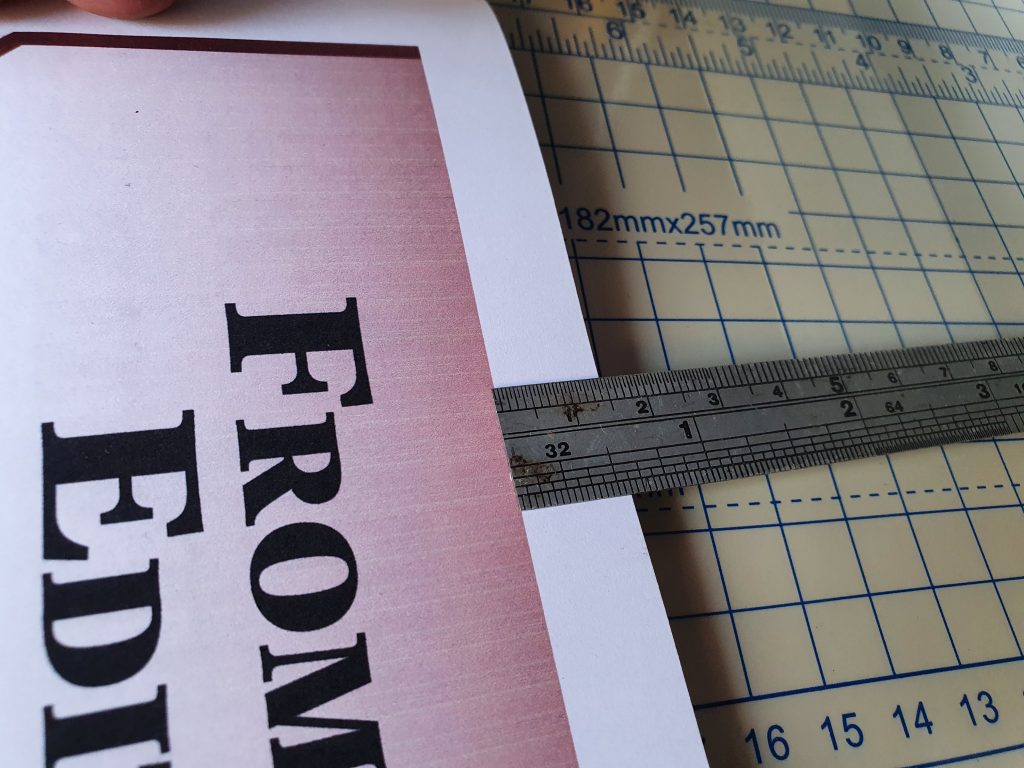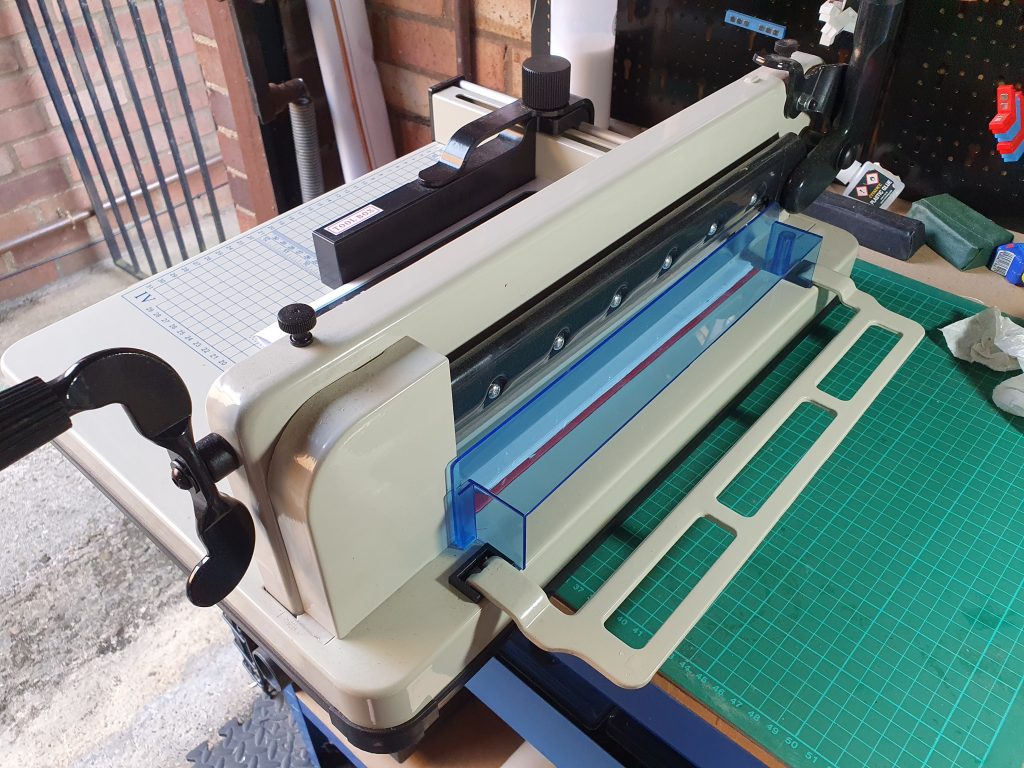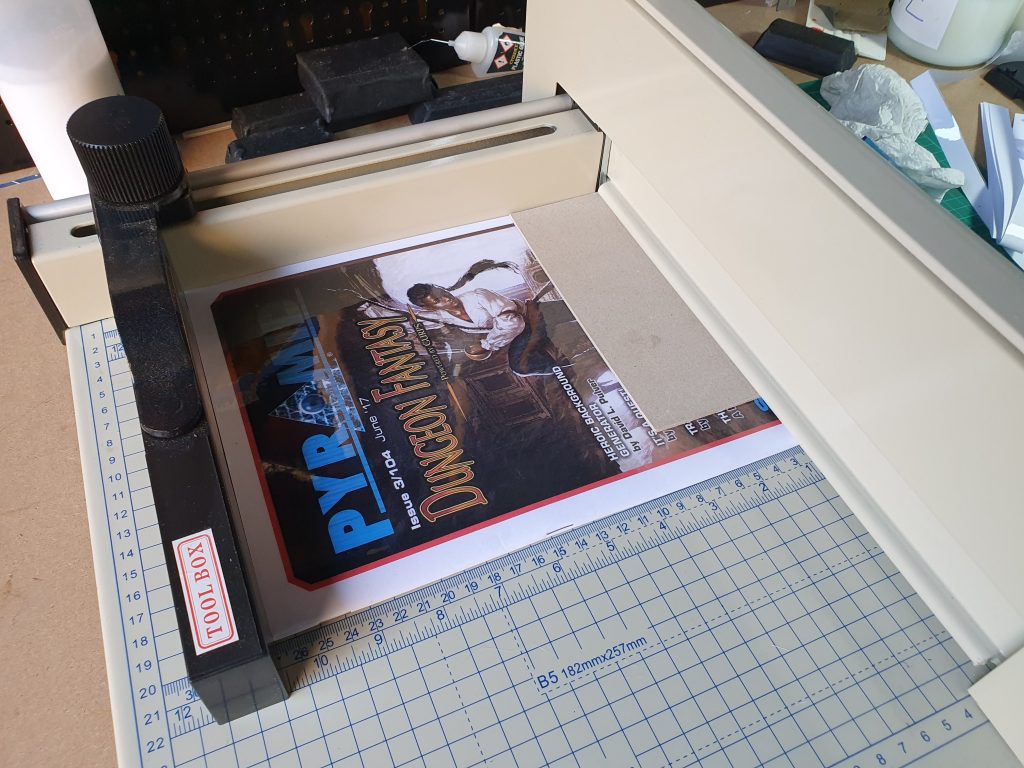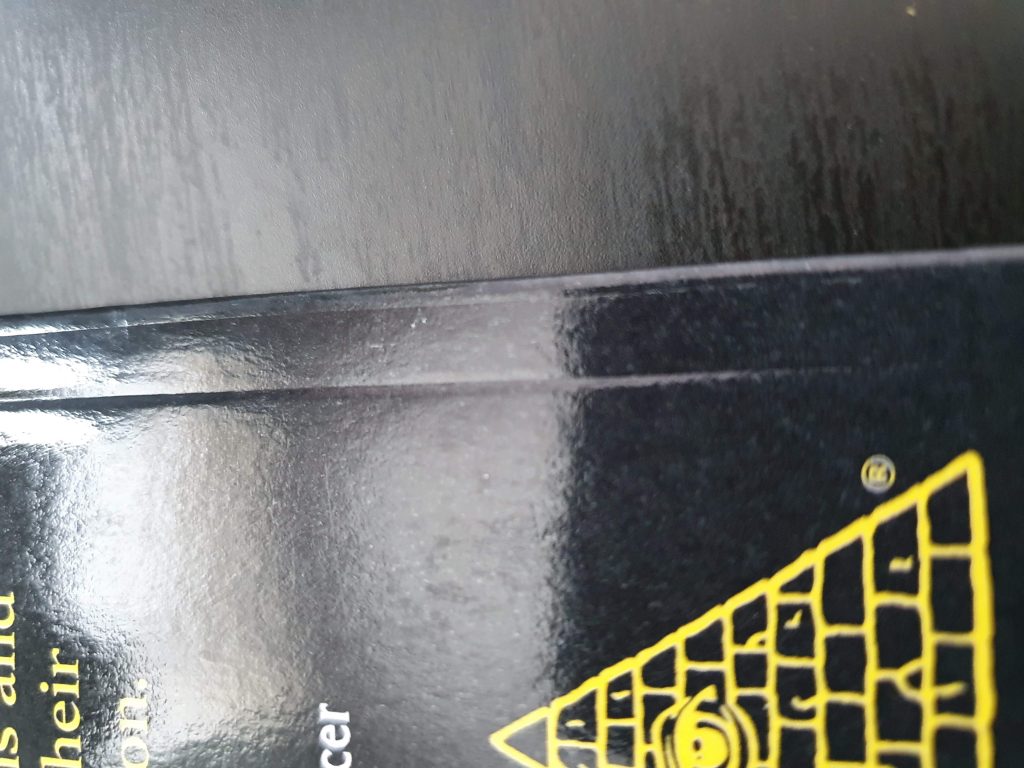Whether you are just starting, just getting back in after a long hiatus, or an experienced Game Master with twenty plus years under your belt of weekly gaming it is alway good to scrape a bit of rust off and polish up some ideas. I’m going to look at some of the websites and books I use to give me some inspiration and that push I often need when I feel burnt out.
It is painfully obvious that I’m not adept at writing or reviews. It is my hope to introduce the reader to resources they may not have come across before or remind them of stuff they may even have collecting dust in the back of their collection.
Print and PDF
Made for 4th edition GURPS this book might make getting into GURPS much easier. I often loan out my copy to a player if they are having issues with the bulk of text and information from GURPS Characters. I really must get this on pdf as my physical copy is getting pretty battered. Like any of the books in the “For Dummies” range it breaks things down in a simple to follow explanation that just wouldn’t work for any RPG rule book as it just isn’t cost effective. This is a very good resource for new players and GM’s alike. Pages 207-370 is all about running your own GURPS game and creating your own world.
Although GURPS specific I would recommend any GM to read this as it offers plenty of advice that is integral to any role playing system. You might consider this an advanced version of “GURPS for Dummies”. EXTREMELY USEFUL is the best way to describe this book. I’m currently coming off of a six year hiatus of playing GURPS and I was shocked at how many rules and bits I had forgotten about just as a player. Sure the core rules were there but I was fuzzy on some of the optional stuff. How to be a GURPS GM is certainly giving me that, “Oh Yeah! I remember that!” moments. I’m currently a player in one game, and GM in four. As a player it is Dungeon Fantasy RPG, as GM it is DFRPG x2, DF, and Monster Hunters. Now although the DFRPG and DF are similar, my players in each group are vastly different. One group is hardcore combat and munchkin, where as the other group enjoys detailed roleplaying and social interactions. They have been known to go out of there way to avoid combat. How to be a GURPS GM certainly has helped dealing with these two different play styles (personally I’m in the middle spectrum between the two).
I still have a lot of refining to do so I often go back to How to be a GURPS GM for ideas and guidance.
Available from Warehouse 23 in softcover and pdf I suggest reading this after reading How to be a GURPS GM. This book assumes you already have some experience and is there to hone your edge. Once sharpened you will be able to trim the fat from your games and your GM style of play. Robin’s Laws is not GURPS specific and I really recommend everyone having a copy of it.
Dungeoneer’s Survival Guide
The Dungeoneer’s Survival Guide and Wilderness Survival Guide were written in 1986 for first edition AD&D. Although the rules concerning gaming are meant for 1E AD&D there is still plenty of advice and ideas between the covers. The first chapter “Overview” in each book are particularly useful for new game masters. The chapter on “The Underground Environment” in DSG gives plenty of ideas of the constant dangers the players need to be aware of other than the denizens that inhabit the underground. Air quality, cave-ins, choke points, and how water plays a big part underground. Properly used these suggestions will lend a new level of realism to your encounters.
The chapter “Improving Play” I would rate as a must read for any GMs planning an extensive underground adventure. This covers how to prepare for a dungeon exploration from equipment, information gathering, the use of beasts of burden, mapping, speed playing, etc.
For myself the information on “The Underground Environment” has been instrumental in shaping my current campaign world which takes place completely underground. This covers cultures, Geography in three dimensions, and the nature of living underground. Brilliant stuff.
These 1E books can be purchased in pdf format from Wizards of the Coast official DriveThruRPG website
Pyramid Magazine has been around since 1993 and started off as an actual magazine (do any of you still remember those?) In 1998 it transformed itself into an online version with an article every week and finally it’s third and final transformation into a monthly pdf in 2008 until it was canceled in 2018. I still weep for the loss of the monthly Pyramid pdf. It is a fountain of information and new ideas and gave me a continuous supply of all things GURPS. You can still purchase the pdf’s from Warehouse 23.
Veins of the Earth by Patrick Stuart
A few blogs raved about Veins of the Earth by Patrick Stuart. It is expensive to get a physical copy at around £30-£50. It is for the Lamentations of the Flame Princess game but had people boasting about it’s uses for playing underground settings. The A5 book is lovely and there is some very useful ideas in the books but ultimately it is very specific for a style of gaming and system. I wouldn’t recommend it as a casual read as it is twice as expensive as The Dungeoneer’s Survival Guide at DriveThru RPG and provides little extra in my opinion. I would like to add that there are a lot of monsters and cultures within Veins of the Earth that might interest some people, but again they are very specific to that game system and, for me at least, didn’t offer anything that I would consider using.
I had a personal issue with the scribbly art and mapping style as well as my misunderstanding from some reviews on what was offered in the book so I might be negatively biased about my dislike of the book.
The works of Philip Reed:
Philip Reed has been producing game aids for decades. Recently he has been flooding Kickstarter with his “Dozen Rumors” series, Delayed Blast Gamemaster, Dungeon Encounters, Fantasy City Sites and Scenes, amongst many others. If you have missed the Kickstarters there is nothing to worry about. They are available at DriveThruRPG under Philip Reed Games and some are available as Print on Demand from Amazon of which I have mentioned in this previous post.
The Dungeoneer’s Field Guide to Hazards (2004) by Philip Reed is an excellent read. Although not intended for GURPS specifically it does contain over fifty pages of hazards you could encounter in a dungeon. It certainly will add a bit of spice to my encounters! Ideas are provided for the quality of air, to the fungus that grows underground, to the frailty of underground complexes that are not maintained.
Although Raging Swan Press does offer many PDF’s for sale I generally use their website for their “20 Things” series and free guides. They offer an array of Gaming Neutral as well as Pathfinder, OSR, and 5e. They are worth checking out.
Although I no longer own these books I do remember the Campaign Sourcebook and Catacomb Guide as well as the Creative Campaigning to be particularly helpful at times.
Grimtooth’s Trap series
Who doesn’t know about Grimtooth’s Traps? A series of generic game aids from the 80’s to help Game Masters slaughter their players in many horrendous and ingenious ways! Thankfully they are available from DriveThruRPG
Citybook series
Also from Flying Buffalo games is the Citybook series I-VII. Might seem dated by some but I still enjoy them.
Websites
Sad to say that while going through my links folder I had to delete over ten addresses that are no longer with us. Many have deleted their web pages and switched to a Patreon system as well, that’s really not my type of thing so I won’t be listing those here. This is probably the reason why I’ve been going old school and buying books or printing pdf’s to have them bound.
Creighton Broadhurst is the publisher at Raging Swan Press and publishes lots of good information for GM’s
Dungeon Fantastic is the blog from GURPS writer Peter V. Dell’Orto filled with lots of good information
GURPS Day Feed Hosted by Gaming Ballistic this site links all GURPS blogs (this one included) into a daily feed so you can find out when something new comes up!
GURPS Repository A website with a lot of fan based monsters, spells and conversions.
The Mook.net Combat Examples: I often have new players look over Warren Wilson’s website for some great examples for GURPS 4e combat.
Sean Punch’s Journal for all the latest GURPS news.
Stuff I’ve not yet gotten/read but might do
I certainly can not recommend any of the following as I have yet to purchase them but they are currently in my saved shopping cart for when I have that extra bit of cash and don’t mind splurging on something that sounds cool but might not be useful (like Veins of the Earth was to me).
Through Dungeons Deep: A Fantasy Gamers’ Handbook by Robert Plamondon. Review for this book is mixed. Many saying the information is outdated for older playstyles from the 70’s and early 80’s but as that is when I started RPG’s it might still be of use to me.
Lairs, Dens and Burrows: Short adventures for Four Against Darkness, for Characters of Any Level by Andrea Sfiligoi. Some good reviews on Amazon PoD. Andrea Sfiligoi has a good amount of Solo adventure books that could be used for inspiration.
The Book of Random Tables by Matt Davids. Available in print or Kindle versions this is a series of books with mixed reviews.


